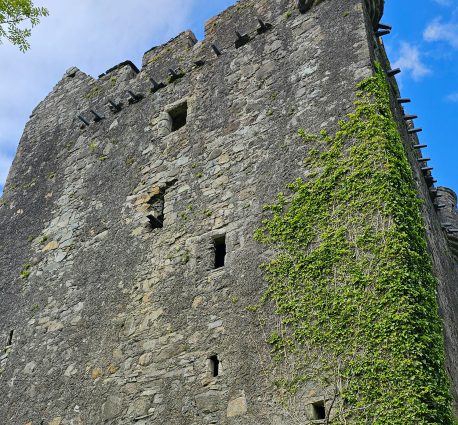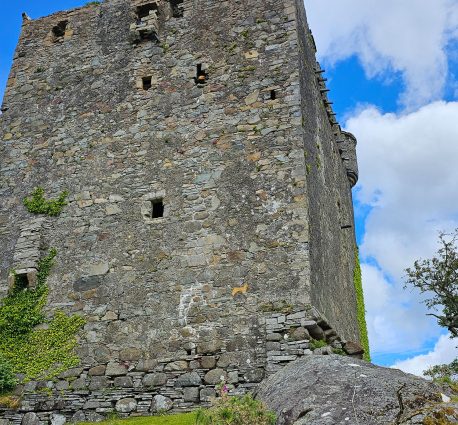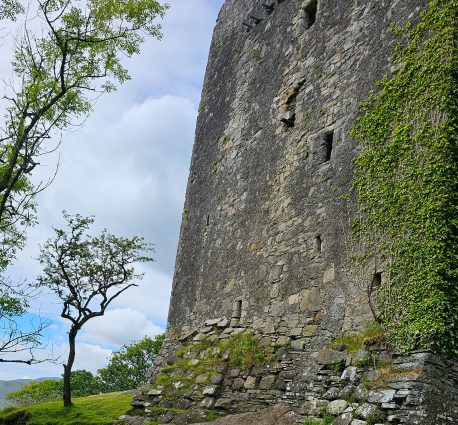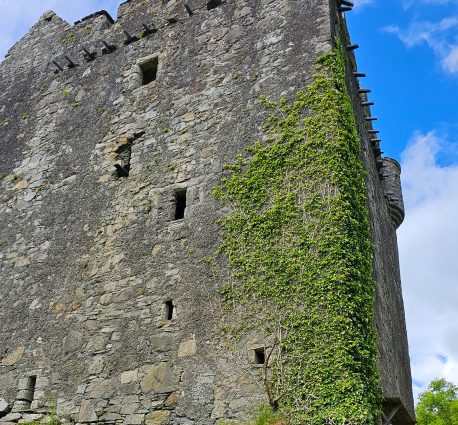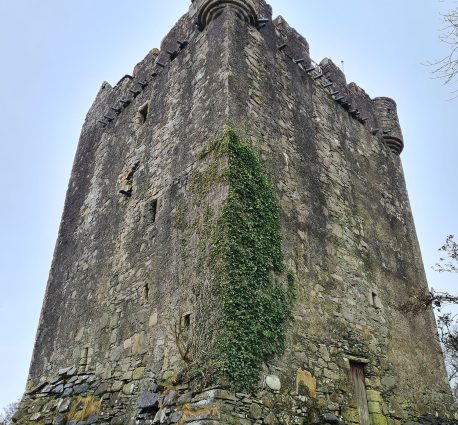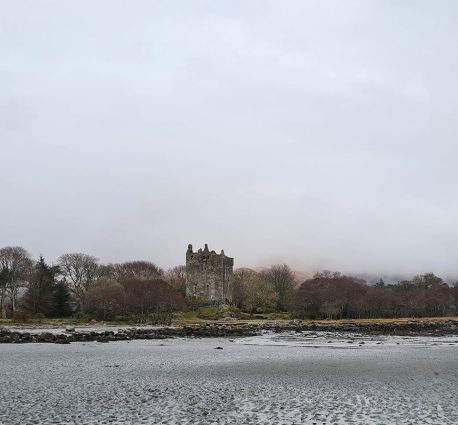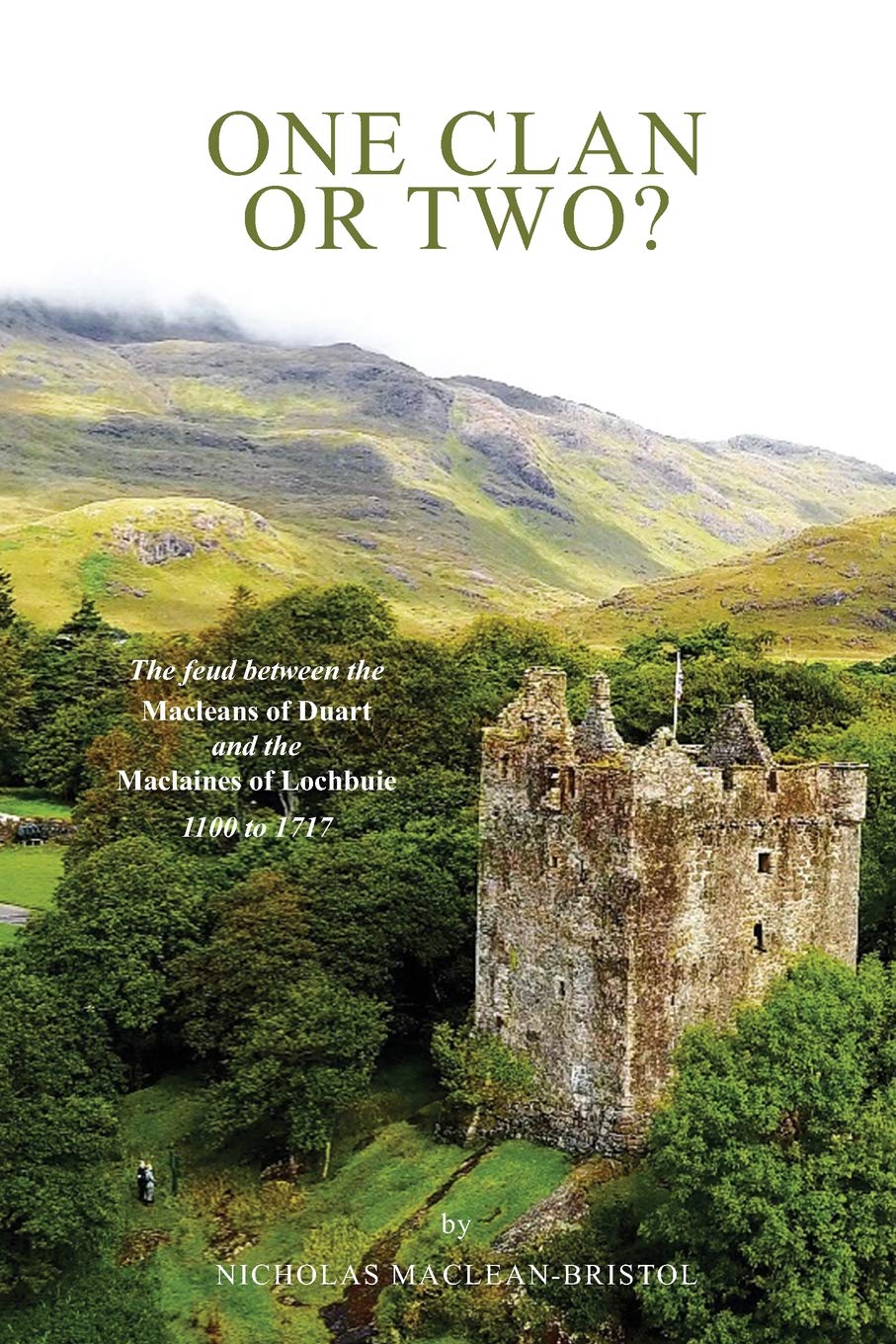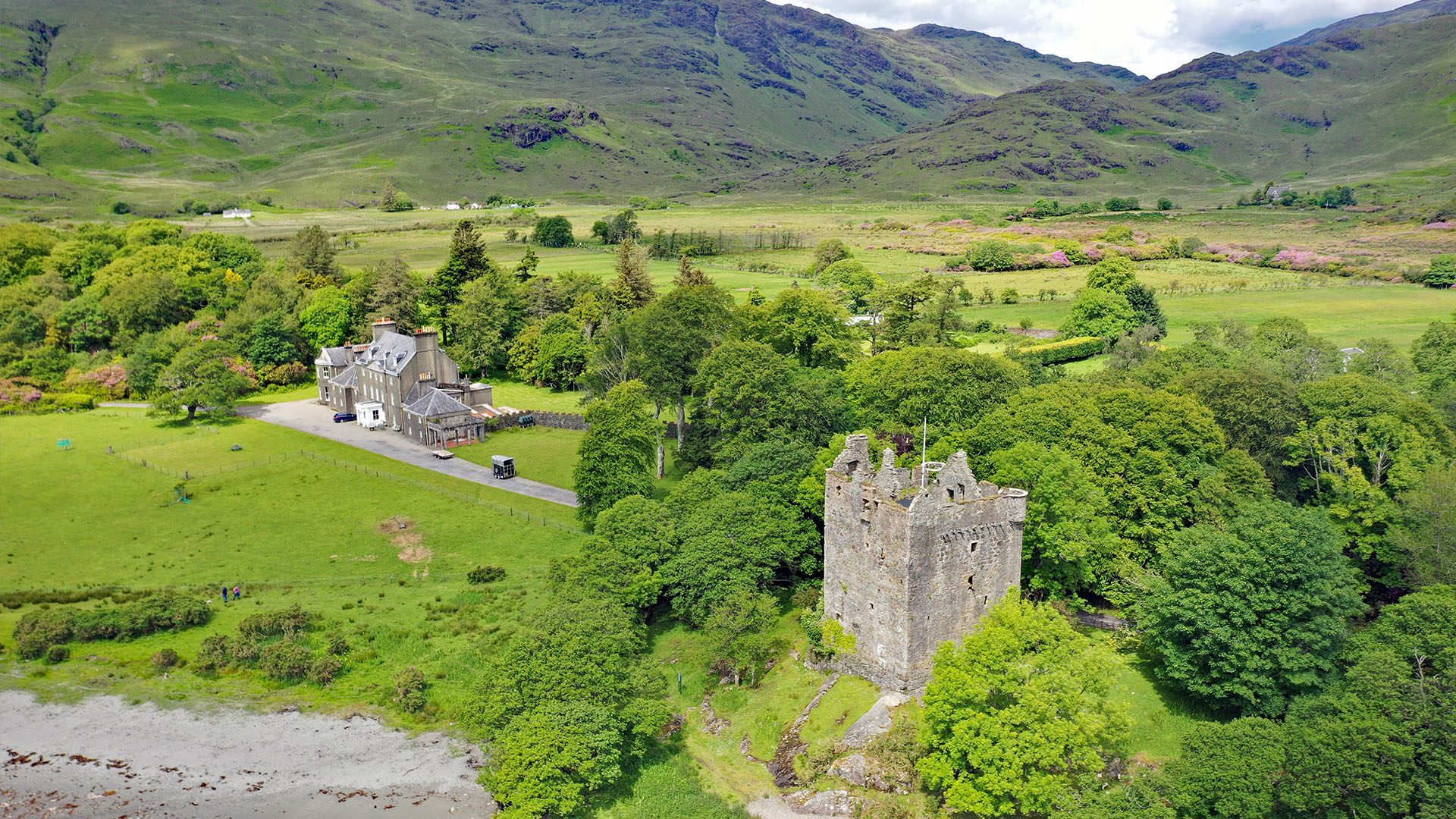
PaulT (Gunther Tschuch), CC BY-SA 4.0, via Wikimedia Commons
Nestled on the picturesque Isle of Mull, at the head of Loch Buie, stands Moy Castle – a formidable 15th-century tower house that whispers tales of Scotland’s turbulent past. More than just a ruin, this scheduled monument is a tangible link to centuries of Highland history, clan rivalries, and enduring legacies.
A Fortress Forged in Conflict
Moy Castle’s story begins in 1360, when the land was granted to Hector Reaganach Maclean, the first Laird of Lochbuie and brother to Lachlan Lubanach Maclean of Duart. This pivotal moment established the House of Lochbuie as a distinct, independent branch of the powerful Clan Maclean. To further differentiate themselves, Hector’s descendants later adopted the spelling “MacLaine”.
Construction of the castle itself began in the early 15th century, likely initiated by John Maclean, the 3rd Laird, and completed by his son, Hector, the 4th Laird. The castle’s earliest official mention appears in a royal charter from March 1494, confirming the MacLaines’ possession of the lands.
The castle’s very foundation is steeped in legend and conflict. Local lore recounts how Hector Reaganach forcefully acquired the land from the Macfadyens, the previous inhabitants. One version suggests he built the castle under the guise of a sheepfold, then used it as a base to wage war. Another, more dramatic tale, claims Hector killed the Macfadyen Chief by shooting an arrow through a bone the chief was eating during a feast. These stories, whether entirely factual or embellished, highlight the often brutal realities of clan expansion and the assertion of dominance in medieval Scotland.
The Heart of Clan MacLaine
For centuries, Moy Castle was the beating heart of the MacLaines of Lochbuie, their principal residence and stronghold. The clan’s history is a tapestry woven with fierce loyalties and strategic shifts. Initially staunch supporters of the Lordship of the Isles, their allegiance shifted towards the Stewart Kings after 1493.
The MacLaines played a significant role in the Jacobite Uprisings. Under Hector, the 12th of Lochbuie, the clan achieved the first victory of the 1689 Jacobite Uprising at the Battle of Knockbrecht and fought bravely at Killiecrankie. Their involvement, however, led to the castle’s temporary surrender to the Earl of Argyll in 1690, though it was restored to the Chief by 1697. A strategic pivot occurred during the 1715 Uprising when Murdoch, the 13th of Lochbuie, shifted support to the Government, a move that likely helped preserve the clan’s influence on Mull.
A Glimpse Inside a Medieval Stronghold
Moy Castle is a three-storey tower house with a garret, boasting remarkably thick walls, measuring 2.2 meters. Built from local schistose slabs, harled stone, and beach boulders, with fine-grained sandstone for openings, it’s a testament to medieval craftsmanship. Inside, the ground floor features a central well, carved into solid rock, which still provides fresh water. A unique feature is the impressive barrel-vaulted chamber on the first floor, likely the main hall, with its vaulting running in the opposite direction to the ground floor. This floor also contains two original mural chambers and a garderobe (latrine chute). Perhaps the most chilling feature is the pit-prison, or bottle-dungeon, a 3.3-meter deep pit accessed only by a hatch, which also maintains a constant water supply.
The upper levels originally had wooden floors. Externally, the castle’s defensive prowess is evident in its embattled parapet with broad merlons and deep, narrow crenelles, and turrets equipped with small firing apertures. Between the castle and the shoreline, the original galley slips are still visible, marking where the clan would have hauled their boats ashore. While little remains today, a barmkin, a thick walled enclosure, once surrounded the castle, providing shelter and animal enclosures.
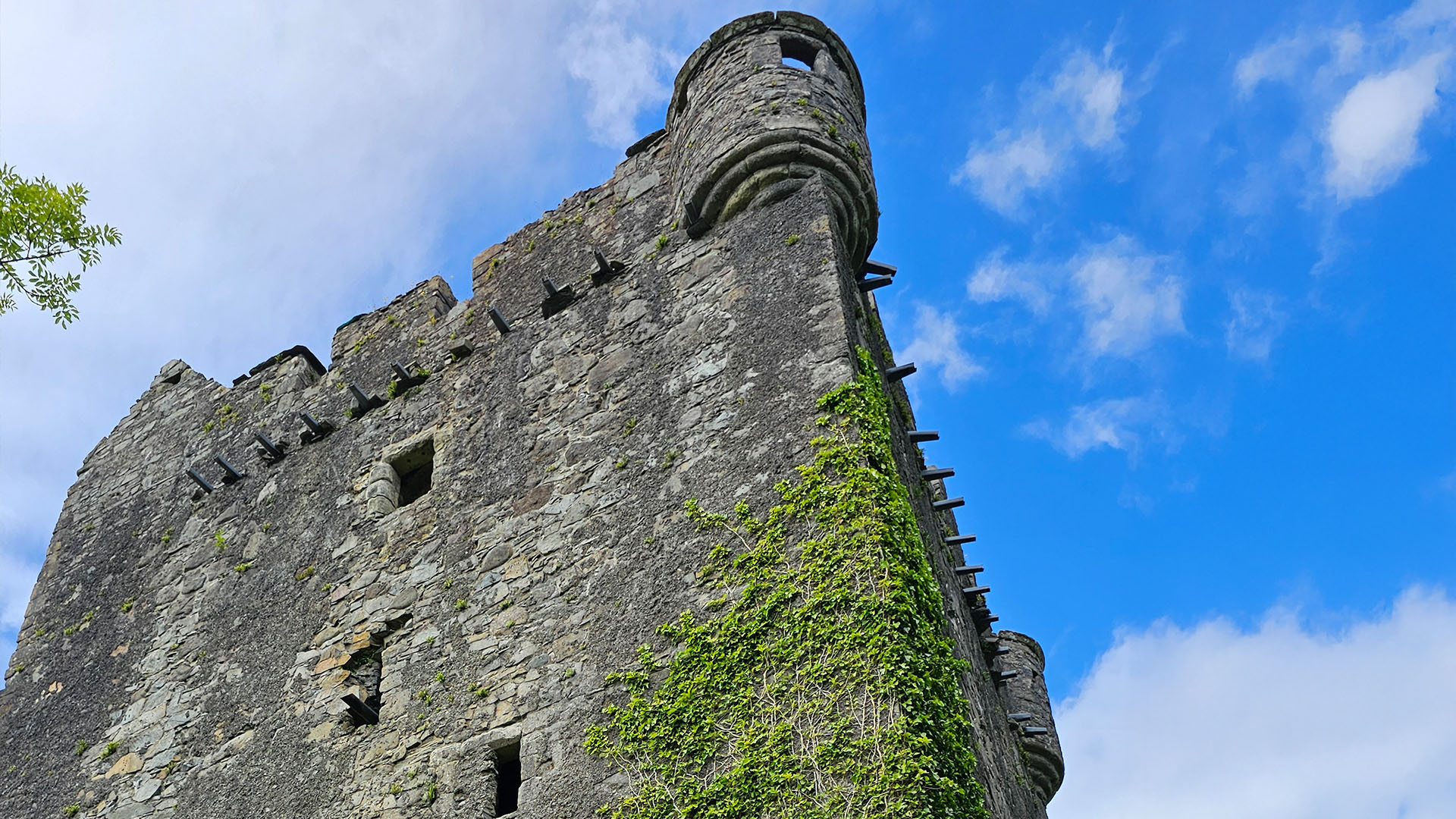
The turrets with windows for firing out of are still visible.
Decline, Abandonment, and a New Chapter
Moy Castle ceased to be the primary residence in 1752, following the completion of a new, more comfortable dwelling nearby, which eventually became known as Lochbuie House. This shift reflected a broader trend among Scottish aristocracy, moving away from austere defensive structures towards more genteel living.
The long era of Clan MacLaine ownership concluded in 1920, when Kenneth Douglas Lorne Maclaine, the 24th of Lochbuie, lost the estate due to a lawsuit. In 1922, the Corbett family purchased the estate, and Jim and Patience Corbett are its current owners, encompassing the 22,000-acre estate and Moy Castle itself.
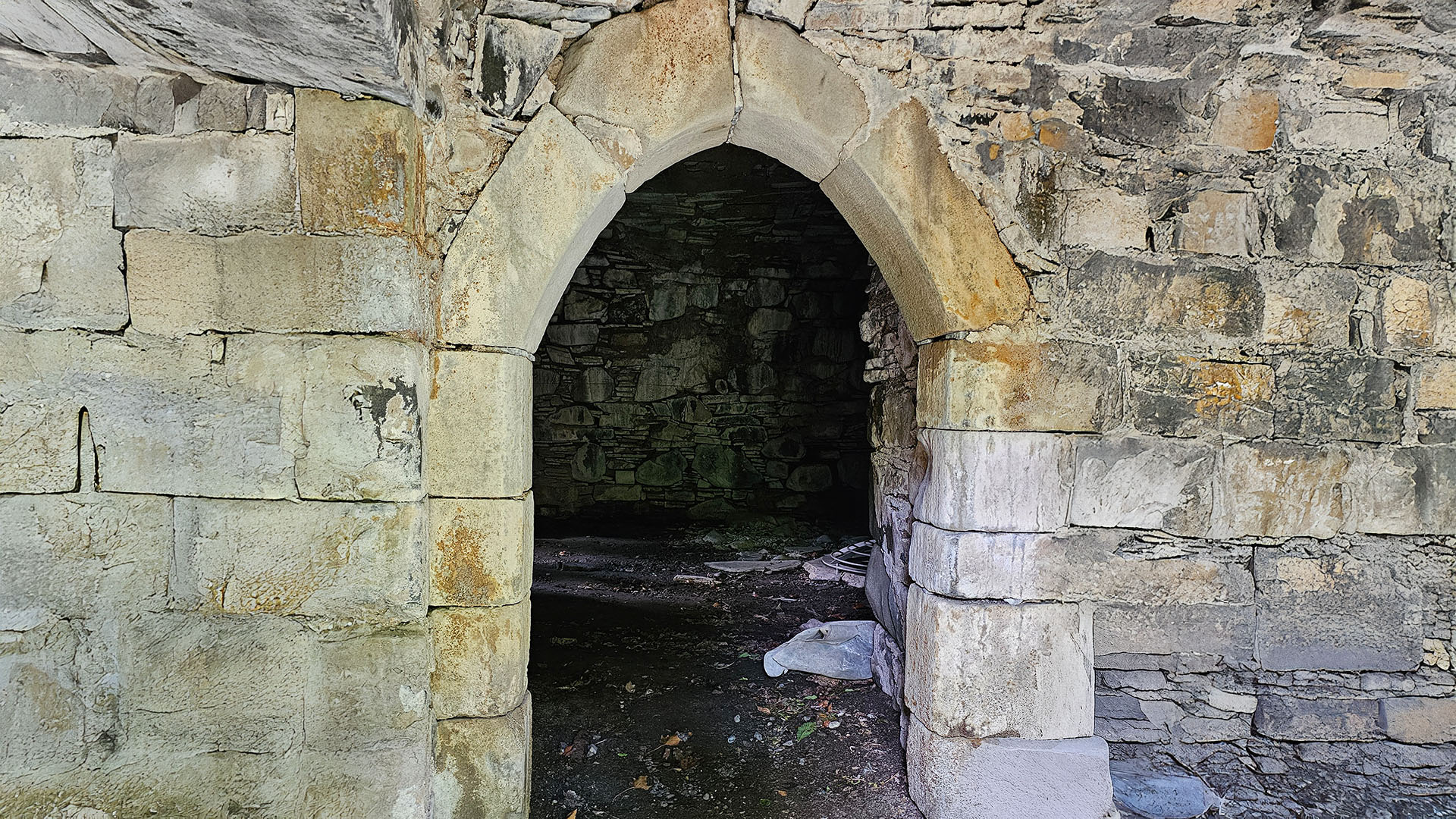
The entrance to Moy Castle today, Please note this is currently closed to the public.
A Ruin Reborn: Modern Preservation Efforts
By the early 21st century, Moy Castle, though largely intact up to its gables and parapet, was roofless and in a state of decay. Recognizing its immense historical value, significant stabilization efforts began between 2006 and 2015.
Emergency conservation work, a collaborative project led by the Mull Historical and Archaeological Society, in partnership with owner Jim Corbett and the Lochbuie estate, aimed to safeguard the castle. This extensive work included stabilizing wall walks with greenheart timber, installing new lead drains, and laying Caithness stone slabs for protection. A new roof was constructed over the stairwell, and handrails were installed for safety.
The current phase of the project is managed by the Nàdair Trust, an Oban-based charity dedicated to heritage preservation. Funding has come from various sources, including major contributions from the Heritage Lottery Fund and Historic Scotland (now Historic Environment Scotland – HES), as well as private entities like Clan Maclaine of Lochbuie and Clan Maclean Heritage Trust. While the castle is not currently open for free public access due to safety concerns from crumbling masonry, its commanding views over Loch Buie still make it a worthwhile destination. These ongoing efforts highlight a modern commitment to preserving Scotland’s rich heritage for future generations.
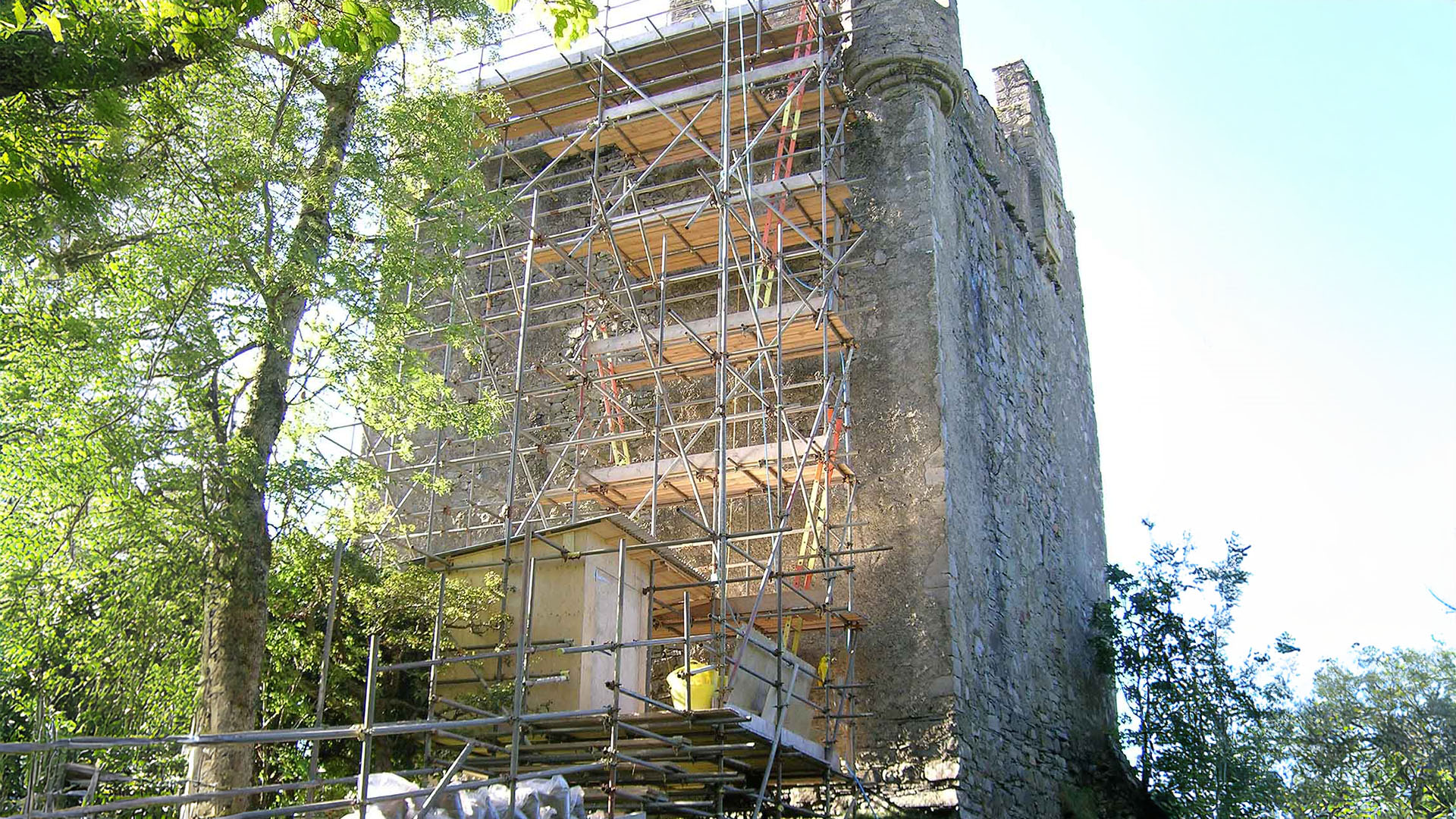
Moy Castle with scaffolding by Fred Howard, CC BY-SA 2.0, via Wikimedia Commons
Echoes of the Past: Legends and Folklore
Moy Castle is not just stone and mortar; it’s alive with the rich tapestry of Scottish folklore. One of the most prominent legends is that of Ewan the Headless. Ewan, said to be the son of a Lochbuie chief, was tragically decapitated in battle near Lochbuie amidst fierce clan rivalries. His restless spirit is believed to haunt the moors, often seen as a headless silhouette galloping on horseback, with the eerie sound of unseen hooves echoing on stormy nights. These spectral appearances are widely regarded as omens of misfortune for the Clan MacLaine of Lochbuie, reportedly seen before significant upheavals like feuds with the Macleans of Duart or the MacLaines’ loss of their ancestral lands in the 19th century.
Another tale, “The Curse of Moy,” though primarily linked to Loch Moy and a feud between the Clan Chattan and Clan Grant, speaks of a dungeon on a rocky island where prisoners were confined. The very presence of a pit-prison within Moy Castle itself lends a chilling credibility to such grim practices in clan history. These legends are vital, transmitting historical memory and reinforcing clan identity, imbuing the physical structure with a deeper, more evocative significance.
A Cinematic Legacy
Beyond its deep historical roots, Moy Castle also holds a place in cinematic history. The castle was used as a filming location for the 1945 romantic comedy “I Know Where I’m Going!” by the acclaimed British filmmaking duo Michael Powell and Emeric Pressburger. The film, a tribute to the Scottish Highlands and Islands, used Moy Castle to add to its romantic and rugged atmosphere, further cementing the stronghold’s place in both local folklore and popular culture.
An Enduring Legacy
Moy Castle stands as a powerful symbol of Scottish clan history. From its forceful beginnings and strategic role in Jacobite conflicts to its eventual abandonment and modern-day preservation, its narrative reflects the profound socio-political changes that have shaped Scotland. Its unique 15th-century architecture, with its defensive features and internal complexities, offers invaluable insights into medieval life.
Today, thanks to dedicated restoration efforts, Moy Castle continues to stand proudly overlooking Loch Buie. It serves as a tangible link to a rich and turbulent past, ensuring that its stories and its stones will continue to inspire and inform for centuries to come.
Revealing previously unconsidered history, Maclean-Bristol debunks centuries of mis-information. His academic study is essential reading for students of "Maclean history" and will result many previously held perceptions having to be discarded.

